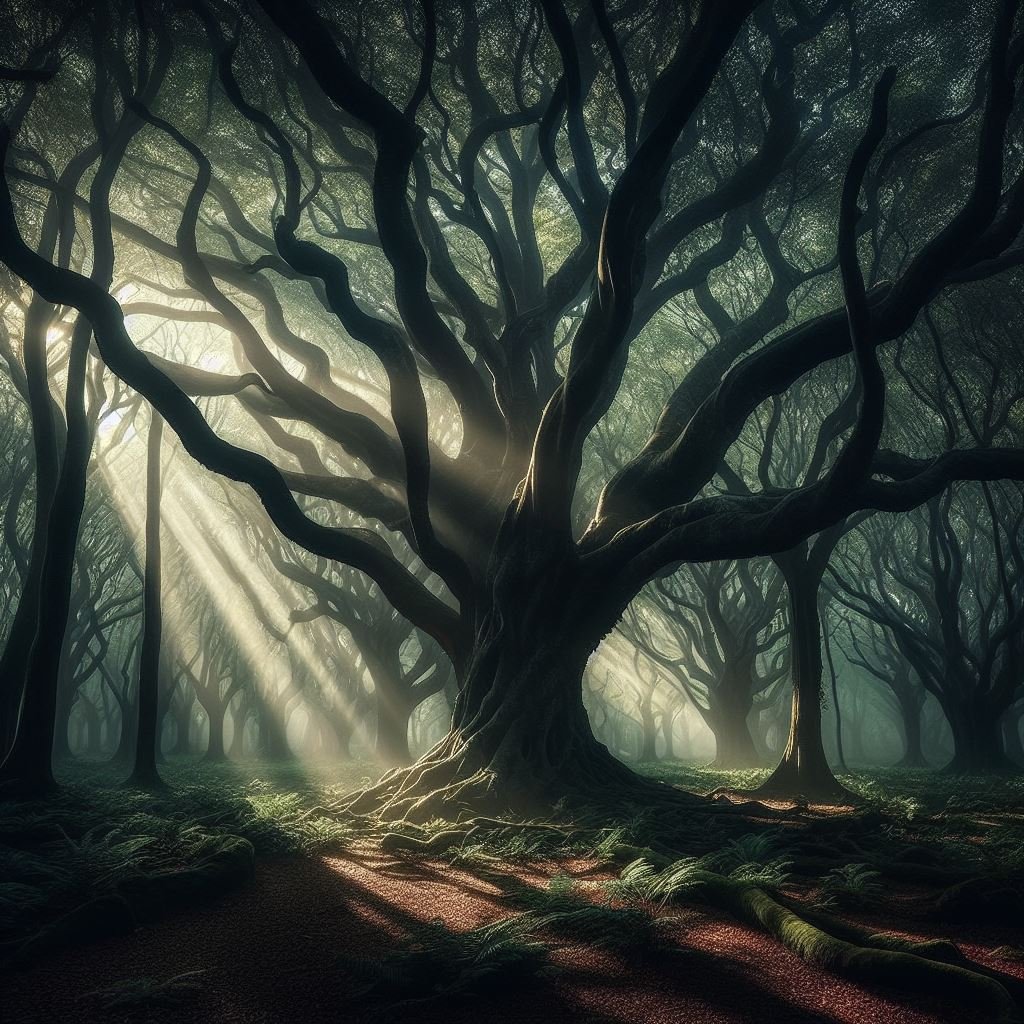The ebony tree stands as a symbol of strength, beauty, and cultural significance in various parts of the world. Its rich history is intertwined with the cultural heritage of diverse regions, making it an intriguing subject to explore. In this blog post, we will delve into the historical journey of the ebony tree, examining its cultural significance, historical uses, evolution over time, and its impact on local communities.
Introduction
Ebony, with its dark and lustrous wood, has captured the imagination of civilizations throughout history. From ancient times to the present day, this remarkable tree has left an indelible mark on cultures and societies worldwide.
Cultural Significance
Let’s embark on a journey across continents, exploring the cultural and symbolic significance of the ebony tree in different regions.

Asia
In Asian cultures, the ebony tree holds great reverence. It is associated with traditional craftsmanship, religious rituals, and artistic expressions. From intricately carved sculptures to ornate furniture, ebony has served as a testament to the region’s exquisite craftsmanship and spiritual beliefs.
South America
Indigenous cultures in South America have long recognized the value of ebony. It has played a significant role in their artistic expressions, ranging from intricate carvings to musical instruments. Ebony’s unique properties have enabled artisans to create masterpieces that celebrate their cultural heritage.
North America
In North America, ebony holds historical significance. During the colonial era, ebony was highly sought after for its use in furniture and music instruments. It became synonymous with luxury and elegance, adorning the homes of the elite and contributing to the rich cultural tapestry of the continent.
Africa
In Africa, the ebony tree carries immense cultural and economic value. It has deep roots in the continent’s history, serving as a symbol of strength and endurance. Ebony’s prized wood has supported local communities through livelihoods and economic opportunities, while also presenting challenges in conservation efforts.
Historical Uses
Throughout different time periods, ebony has been prized for its exceptional qualities and versatility. Let’s explore its historical uses and significance.

Ancient Civilizations
In ancient civilizations, the beauty and rarity of ebony made it a highly coveted material for royal artifacts and ceremonial objects. Its dark wood was associated with power, luxury, and divine connections.
Colonial Era
The colonial era brought a darker chapter in the history of ebony. The demand for this exquisite wood fueled the slave trade and led to exploitation of both the land and its people. The ebony trade became intertwined with the struggles for power and resources.
Modern Times
In modern times, ebony has found its place in fine woodworking and luxury products. Craftsmen worldwide continue to create exquisite furniture, musical instruments, and decorative items that showcase ebony’s timeless elegance.
Evolution Over Time
Like many natural resources, ebony has experienced an evolution in its perception and use over time. Let’s examine the changing attitudes and practices surrounding ebony.
Conservation efforts and sustainable practices have emerged to mitigate the impact of ebony harvesting. Awareness of the need for responsible sourcing has grown, encouraging sustainable practices and supporting the preservation of this precious resource.
Shifting cultural attitudes and market demands have also played a role in the evolution of ebony. As consumers become more conscious of the environmental and social implications of their choices, the demand for sustainably sourced ebony has risen.
Impact on Local Communities
The ebony tree has had a profound impact on the livelihoods and economic opportunities of local communities. Let’s explore how it has shaped the lives of those residing in ebony-rich regions.

Livelihoods and Economic Opportunities
For many communities, the ebony tree is a source of income and livelihood. From skilled craftsmen to local entrepreneurs, the sustainable utilization of ebony has provided economic stability and supported community development.
Challenges and Conservation Efforts
Preserving the ebony tree and its ecosystem presents challenges. Conservation efforts aim to balance the demand for ebony while ensuring the long-term viability of this valuable resource. By promoting sustainable practices and supporting local communities, these initiatives work towards maintaining the delicate balance between preservation and utilization.
Black Ebony (Diospyros crassiflora) is a species of flowering plant native to the tropical rainforests of Central and West Africa. It’s highly prized for its dark, dense heartwood that’s often used in the making of musical instruments and fine furniture.
Black Ebony Bonsai
Growing Black Ebony as a bonsai tree can be a challenging but rewarding endeavor. The trees are slow growing and require careful attention to watering, light, and temperature conditions.
Here are some basic care tips for Black Ebony Bonsai:
- Light: Black Ebony Bonsai Trees require ample sunlight. However, they should not be exposed to direct, scorching sun as it can cause the leaves to burn.
- Watering: These trees prefer well-drained soil and do not like to be overwatered. Water your bonsai when the topsoil feels slightly dry to the touch.
- Temperature: Black Ebony Trees are tropical and do best in warm temperatures. They can tolerate a range of humidity levels but will suffer in cold, dry conditions.
- Pruning: Regular pruning is necessary to maintain the shape of the bonsai and to encourage the growth of new branches.
- Feeding: A slow-release granular fertilizer can be used during the growing season to provide essential nutrients.
Remember, every tree is unique and may have specific needs. It’s always a good idea to consult with a bonsai expert or do further research tailored to your specific tree and environment.
Please note: Black Ebony is an endangered species due to overharvesting for its valuable timber. If you’re considering getting one, make sure it’s sourced responsibly.
Why is ebony so expensive?
Ebony is known for its rich characteristics and distinctive black color, making it one of the most expensive woods in the world. The high price is primarily due to its rarity and the high demand for this high-quality hardwood.
Ebony trees are slow-growing and small, which contributes to their scarcity. The wood is very hard, strong, and finely textured, with a mirror finish when polished. These qualities make it highly desirable for use in fine furniture, musical instruments, and other ornamental objects.
However, the high demand and high price of Ebony have led to overharvesting, resulting in it being under threat of extinction. This has further increased its rarity and price.
It’s worth noting that the cost of Ebony can vary greatly depending on where you are, with prices regularly between $75/bf and $100/bf.
Is it legal to buy ebony?
Yes, it is legal to buy Ebony wood in the United States and many other countries. However, there are several conditions and restrictions due to its endangered status.
Ebony can be purchased from licensed dealers who have legal rights to sell it. These dealers typically source their ebony from countries where it is still legal to harvest, such as certain parts of Africa and India.
However, some countries have banned the export of Ebony due to overexploitation and drastic population reduction. For instance, a law passed in 2006 in Madagascar prohibited the harvest and export of ebony.
Furthermore, the Lacey Act in the United States prohibits trade in wildlife, fish, and plants that have been illegally taken, possessed, transported, or sold. This means that any Ebony wood imported into the U.S. must be harvested and exported legally.
Conclusion
The history of the ebony tree is a testament to its enduring cultural significance and economic value. From its revered status in ancient civilizations to its representation of luxury and elegance throughout the ages, ebony continues to captivate with its timeless beauty.
As we navigate the complexities surrounding ebony, let us recognize the importance of preserving cultural heritage, promoting sustainable practices, and supporting the communities that are intricately connected to this remarkable tree. By doing so, we ensure that the legacy of the ebony tree endures for generations to come.
Frequently Asked Questions (FAQs)
What is the ebony tree?
- The ebony tree is a type of tree recognized for its hard, dark, and glossy wood. It has been revered throughout history for its beauty and durability, used in various applications from luxury furniture to musical instruments.
Where is the ebony tree primarily found?
The ebony tree primarily grows in several tropical regions worldwide, including South and Southeast Asia, Africa, and South America.
Why is the ebony tree significant?
The ebony tree holds great cultural, historical, and economic significance. Its wood has been used in various cultural expressions, from crafting royal artifacts in ancient civilizations to luxury goods in modern times.
What is the impact of the ebony trade on local communities?
The ebony trade has both positive and negative impacts on local communities. It provides livelihood and economic opportunities; however, it also poses challenges regarding sustainability and conservation.
What are the conservation efforts for the ebony tree?
Conservation efforts for the ebony tree focus on sustainable harvesting practices, reforestation initiatives, and raising awareness about the ecological significance of the tree. These efforts aim to balance the economic benefits with the environmental impact.





